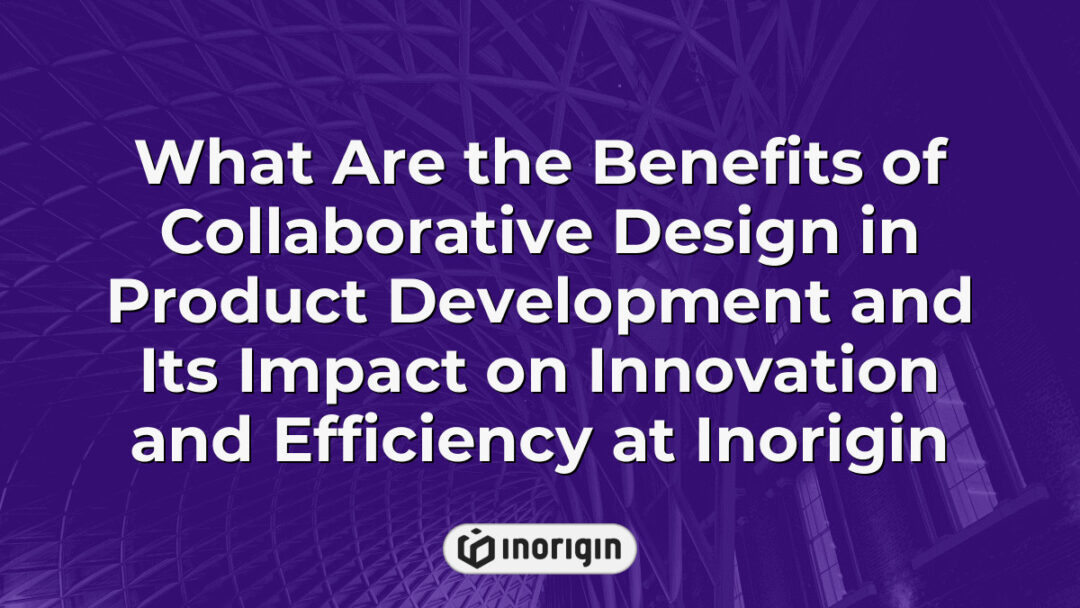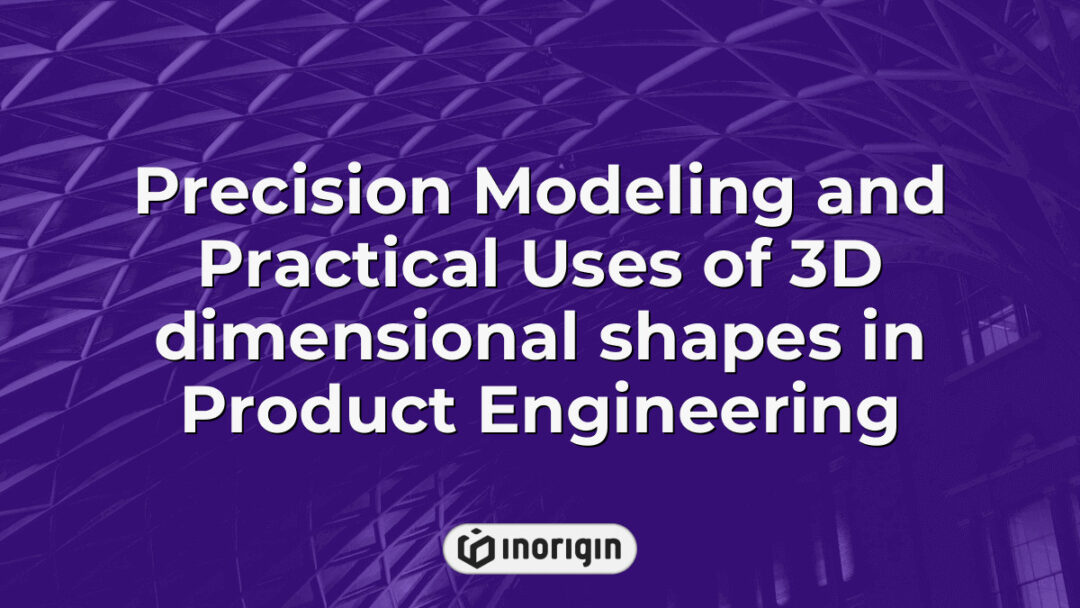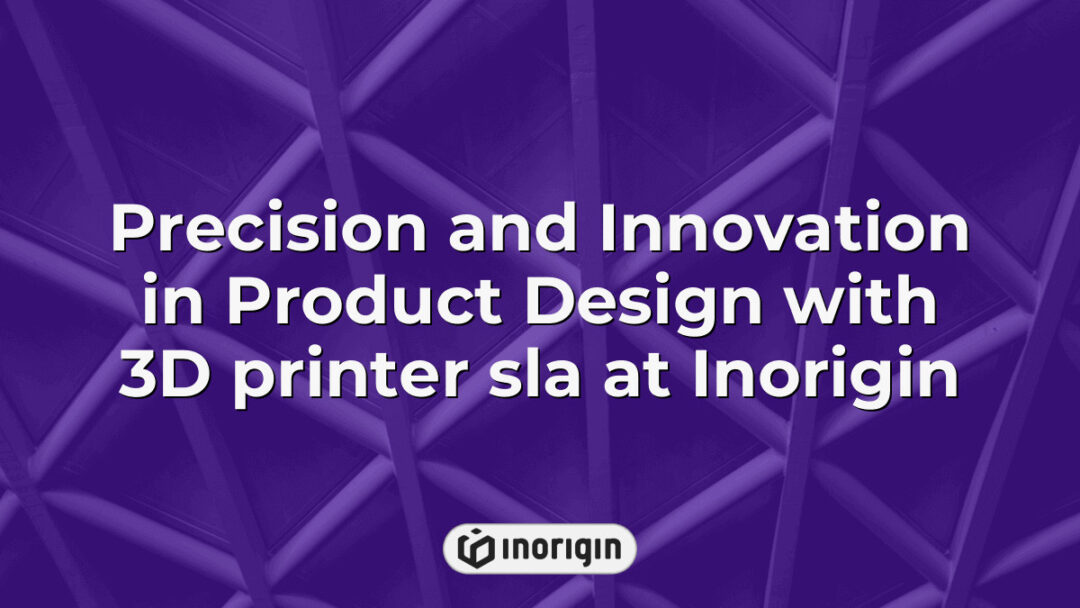In today’s fast-paced and constantly evolving market, the importance of collaboration in product development cannot be overstated. Like a well-oiled machine, collaborative design brings together diverse perspectives, expertise, and creativity to create innovative and successful products. From fostering a sense of ownership among team members to reducing time-to-market, the benefits of collaborative design are numerous and impactful. So, what exactly are these benefits? Let’s delve into why collaborative design is essential for driving success in product development.
| Aspect | Key Takeaway |
|---|---|
| Definition and Importance | What Are the Benefits of Collaborative Design in Product Development? It unites diverse expertise and perspectives, fostering innovation and elevating the quality of market-ready consumer products. |
| Enhanced Creativity and Innovation | Collaboration sparks new ideas by combining varied viewpoints, pushing beyond conventional design boundaries to develop groundbreaking solutions. |
| Improved Problem-Solving and Decision-Making | Diverse team input leads to more effective solutions and well-rounded decisions, ensuring all product aspects are carefully evaluated. |
| Increased Efficiency and Faster Time-to-Market | Streamlined workflows and open communication accelerate development cycles, providing businesses a competitive edge by launching products sooner. |
| Alignment with User Needs | Involving stakeholders and end-users early uncovers true preferences and potential issues, resulting in products that resonate deeply with customers. |
| Utilizing Diverse Expertise | Integrating knowledge from multiple disciplines enhances design quality and fosters innovative outcomes aligned with market demands. |
| Risk Reduction and Cost Management | Early feedback and iterative collaboration minimize costly errors, ensuring efficient use of resources and robust product development. |
Understanding The Concept Of Collaborative Design In Product Development
Collaborative design in product development is like a symphony, where different instruments come together to create a harmonious and impactful piece. In collaborative product development, individuals from diverse backgrounds and expertise work together to bring a product to life. This approach allows for the pooling of ideas, resources, and knowledge from various stakeholders, resulting in a more holistic and well-rounded end product. By fostering collaboration throughout the entire design process, companies can tap into the collective intelligence of their teams, leading to greater creativity and innovation in product development.
Improved Creativity And Innovation Through Collaboration
While individual creativity and expertise are valuable, increased innovation often arises from collaborative design in product development. By bringing together diverse perspectives and ideas, collaboration fosters a dynamic environment where new concepts can flourish. This juxtaposition of different viewpoints not only sparks creativity but also encourages innovative thinking that may not have been possible on an individual level. Through this process, teams can push the boundaries of traditional design methods and develop truly groundbreaking products.
Furthermore, the exchange of knowledge and skills within a collaborative setting can lead to increased innovation as team members build upon each other’s ideas and insights. As individuals contribute their unique strengths to the design process, the collective result is often far more innovative than any single contribution could achieve alone. The synergy created by collaborating allows for breakthroughs that might otherwise remain untapped.
As we delve into the benefits of collaborative design in product development, it becomes evident that enhanced problem-solving and decision-making processes go hand in hand with increased innovation achieved through collaboration…
Enhanced Problem-solving And Decision-making Processes
What are the benefits of collaborative design in product development? Collaborative design not only fosters improved creativity and innovation but also enhances problem-solving and decision-making processes. When different individuals come together to work on a project, they bring with them diverse expertise and communication skills that can lead to more effective solutions. In the industry, this type of collaboration allows for a broader perspective on potential challenges and opportunities, leading to better decisions being made throughout the development process.
By involving various team members in the problem-solving and decision-making processes, collaborative design ensures that all aspects of a product are thoroughly considered. This approach encourages the exploration of multiple perspectives and ideas, ultimately resulting in more robust solutions. Additionally, when individuals from different disciplines collaborate, they can challenge each other?s assumptions and push for innovative approaches which may have otherwise been overlooked.
Furthermore, by facilitating open communication among team members during the decision-making process, collaborative design leads to greater buy-in for final decisions. This kind of involvement helps ensure a smoother transition from concept to execution as everyone is aware of why specific choices were made. Ultimately, enhanced problem-solving and decision-making processes through collaborative design contribute significantly to the overall success of product development efforts.
Increased Efficiency And Reduced Time To Market
As the saying goes, "time is money," and in product development, this couldn’t be more true. Collaborative design not only fosters creativity and innovation but also leads to increased efficiency and a faster time to market. By bringing together diverse perspectives and skill sets, teams can streamline processes, identify inefficiencies, and make decisions more quickly. This allows for products to reach the market at a quicker pace, giving companies a competitive edge in meeting consumer demands.
Imagine a well-oiled machine, where every gear turns smoothly and effortlessly. That’s the kind of efficiency that collaborative design brings to product development. With everyone working together seamlessly towards a common goal, tasks are completed with greater speed and precision. This ultimately translates into a faster time to market, allowing companies to capitalize on opportunities before their competitors do.
With increased efficiency comes reduced time to market, providing businesses with an advantage over their competition. By leveraging the power of collaborative design, organizations can position themselves as industry leaders by delivering innovative products faster than the rest. In turn, this enables them to stay ahead of trends and meet customer needs more effectively. Now let’s explore how better alignment with user needs and preferences plays a crucial role in successful product development.
Better Alignment With User Needs And Preferences
Product design collaboration offers numerous benefits, but one of the most significant advantages is its ability to better align with user needs and preferences. By involving various stakeholders in the design process, including customers, product managers, designers, and engineers, teams can gain valuable insights into what users truly want and need from a product. This collaborative approach ensures that the final product not only meets technical specifications but also resonates with end-users on a deeper level.
Furthermore, product design collaboration helps to uncover potential issues or opportunities early on in the development process. With diverse perspectives at the table, teams are more likely to identify blind spots and consider alternative solutions that may have been overlooked otherwise. This ultimately leads to a more robust and well-rounded product that addresses a wider range of user needs and preferences.
As we delve further into the discussion about stronger cross-functional teamwork and communication within this context…
Stronger Cross-functional Teamwork And Communication
Collaborative design in product development fosters stronger cross-functional teamwork and communication, which are crucial for the success of any project. By working together, teams can leverage their combined expertise to achieve better results while also enhancing overall efficiency and productivity. This approach allows for a more cohesive and integrated process that ultimately benefits both the team and the end product.
- Collaboration: Encourages different departments to work together towards a common goal
- Communication: Facilitates open dialogue and sharing of ideas between team members
- Teamwork: Promotes a sense of unity and collective responsibility for the project’s success
By fostering collaboration, communication, and teamwork within the product development process, organizations can tap into the full potential of their workforce. This not only leads to improved products but also enhances employee engagement and satisfaction as they feel valued for their contributions. Ultimately, it creates an environment where diverse perspectives and expertise come together to drive innovation and deliver exceptional outcomes.
Utilizing Diverse Perspectives And Expertise For Better Outcomes
At the heart of effective design collaboration lies the ability to utilize diverse perspectives and expertise for better outcomes. By bringing together individuals from different departments and backgrounds, product development teams can tap into a wealth of knowledge and insights that may not have been accessible otherwise. This allows for a more holistic approach to problem-solving, as well as the opportunity to explore unique solutions that stem from the intersection of various disciplines. In essence, by leveraging the collective wisdom of team members, design collaboration can lead to more innovative and successful products.
Moreover, incorporating input from a range of experts enhances the quality of decision-making throughout the product development process. Rather than relying solely on the perspective of one individual or department, collaborative design encourages thorough consideration of multiple viewpoints and potential solutions. This not only fosters creativity but also ensures that all aspects of a product are carefully examined before moving forward with implementation. Ultimately, this results in products that are more robust, user-focused, and aligned with market needs.
Minimizing Risks And Costs Through Early Feedback And Iteration
Imagine collaborative design as a safety net, catching potential pitfalls and obstacles before they become costly mistakes in the product development process. By involving different perspectives and expertise early on, teams can identify and address issues that may have been overlooked otherwise. This not only reduces production costs but also minimizes risks associated with launching a flawed or inadequate product. Early feedback and iteration are crucial components of this approach, allowing for adjustments to be made swiftly and efficiently.
Collaborative design not only saves time and money by addressing potential problems early on, but it also fosters an environment of continuous improvement. When diverse perspectives come together to contribute their insights, the result is a more robust and refined final product. Furthermore, by incorporating feedback into the iterative process, teams can ensure that the end product meets the needs and expectations of its intended audience. As we delve deeper into building a culture of continuous improvement and learning, it becomes clear that collaborative design plays a pivotal role in shaping successful product development strategies.
Building A Culture Of Continuous Improvement And Learning
Building a culture of continuous improvement and learning begins with embracing the wide range of perspectives that collaborative design brings to product development. By fostering an environment where team members are encouraged to contribute their unique ideas, experiences, and expertise, companies can tap into a treasure trove of creativity and innovation. This not only leads to better products but also cultivates a sense of ownership and pride among employees, ultimately enhancing morale and job satisfaction.
Moreover, by integrating diverse viewpoints throughout the design process, organizations can uncover potential pitfalls and opportunities that may have otherwise gone unnoticed. This proactive approach allows for quick adjustments and refinements, resulting in more robust and market-ready products. Additionally, engaging in ongoing discussions and knowledge sharing promotes skill enhancement within teams, paving the way for long-term growth and adaptability in an ever-evolving marketplace.
Embracing a culture of continuous improvement through collaborative design is essential for staying ahead in today’s competitive landscape. As we delve deeper into achieving a competitive advantage through collaborative design in product development, it is crucial to recognize how this approach fosters agility and responsiveness ? two key factors that drive success in bringing innovative solutions to market.
Achieving A Competitive Advantage Through Collaborative Design In Product Development
Collaborative design in product development offers numerous benefits, ultimately leading to a competitive advantage. By involving various stakeholders in the process, such as designers, engineers, and end-users, companies can build a better product that meets the needs and expectations of their target market. Additionally, this approach fosters innovation and creativity by bringing together diverse perspectives and expertise. As a result, organizations can gain a deeper understanding of customer preferences and industry trends, allowing them to stay ahead of the competition.
Moreover, collaborative design encourages knowledge sharing and continuous improvement within teams. Through open communication and idea exchange, employees are able to leverage each other’s strengths and experiences to create innovative solutions. This not only enhances the overall quality of the product but also cultivates a culture of learning and adaptability within the organization. Ultimately, this leads to improved efficiency and effectiveness in delivering high-quality products to customers.
Incorporating collaborative design into product development processes allows companies to achieve a competitive edge in the market. The collective efforts of cross-functional teams result in faster time-to-market for new products while ensuring they meet or exceed customer expectations. Furthermore, by leveraging diverse skill sets and insights from different departments, companies can build stronger relationships with their customers through more tailored and valuable offerings. Overall, embracing collaborative design is an essential strategy for achieving sustained success in today’s dynamic business environment.
Frequently Asked Questions
How Can Companies Encourage A Culture Of Collaboration Within Their Product Development Teams?
To encourage a culture of collaboration within their product development teams, companies can implement various strategies. Firstly, they can create open and inclusive communication channels where team members feel comfortable sharing ideas and feedback. This could involve regular team meetings, brainstorming sessions, or even virtual collaboration platforms that allow for real-time input from all team members. Additionally, companies can promote a sense of collective ownership by emphasizing the importance of each team member’s contribution to the overall success of the project. By recognizing and celebrating individual achievements within the context of a collaborative effort, companies can foster a spirit of teamwork and camaraderie among their product development teams.
Moreover, providing training and resources on effective collaboration techniques can also be beneficial in encouraging a culture of teamwork within product development teams. This could include workshops on active listening, conflict resolution, and problem-solving as well as tools for efficient project management and communication. Companies should also lead by example by showcasing successful examples of collaboration within their organization, highlighting the positive outcomes that result from working together towards a common goal.
Ultimately, by creating an environment that values and promotes collaboration, companies can empower their product development teams to work together more effectively towards innovative solutions and successful outcomes without feeling siloed or isolated in their efforts. This not only fosters greater creativity and productivity but also contributes to a more cohesive and supportive company culture overall.
What Are Some Common Challenges That Arise When Implementing Collaborative Design In Product Development, And How Can They Be Overcome?
Implementing collaborative design in product development can bring about various challenges. One common challenge is the resistance to change from team members who are used to working independently. This can lead to a lack of buy-in and participation, hindering the effectiveness of collaborative efforts. Additionally, communication barriers and differing opinions among team members can result in conflicts that impact the overall progress of the project.
However, these challenges can be overcome through effective leadership and clear communication. Encouraging open discussions and providing platforms for sharing ideas can help alleviate resistance to collaboration. Setting clear goals and expectations for the collaborative process can also help align team members towards a common purpose. In addition, fostering a culture of trust and respect within the team can help mitigate conflicts and enable productive collaboration.
By addressing these challenges head-on, companies can create an environment where collaborative design in product development becomes not only achievable but also beneficial for all involved parties.
Are There Specific Tools Or Technologies That Are Particularly Helpful For Facilitating Collaborative Design In Product Development?
While collaborative design in product development has numerous benefits, it is also important to consider the specific tools and technologies that can facilitate this process. One such tool is virtual reality (VR), which allows team members to immerse themselves in a digital environment and collaborate on designs in real time. This not only enhances communication and understanding but also reduces the need for physical prototypes, saving time and resources. On the other hand, cloud-based project management platforms provide a centralized space for teams to share ideas, track progress, and manage tasks efficiently. These platforms offer flexibility and accessibility, allowing team members to work together seamlessly regardless of their location.
In addition to VR and cloud-based platforms, computer-aided design (CAD) software plays a crucial role in facilitating collaborative design. With CAD, multiple designers can work simultaneously on different aspects of a product while maintaining version control and ensuring compatibility between various components. Furthermore, 3D printing technology enables rapid prototyping and iteration based on feedback from all stakeholders involved in the collaborative design process. Ultimately, these tools and technologies not only enhance collaboration among team members but also contribute to more efficient and innovative product development processes.
How Does Collaborative Design In Product Development Impact The Overall Product Development Timeline And Budget?
"Time is money," and in product development, the impact of collaborative design on the overall timeline and budget cannot be overstated. First and foremost, collaborative design allows for faster decision-making processes, as input from multiple stakeholders can be gathered and integrated more efficiently. This can result in a streamlined development timeline, as fewer iterations are needed to reach a final design. Additionally, by involving various team members in the design process, potential issues or roadblocks can be identified earlier, preventing costly delays down the line.
Furthermore, the ability to work collaboratively often leads to greater innovation and creativity in product development. When individuals with diverse expertise come together, they bring different perspectives that can lead to breakthrough ideas. This can ultimately result in products that better meet customer needs and stand out in the market.
In terms of budgetary impact, collaborative design has been shown to reduce costs associated with rework and redesign. By catching potential flaws early on through collaboration, resources are not wasted on fixing problems after production has begun. Moreover, involving all relevant parties throughout the design phase ensures that their unique insights contribute to a more comprehensive understanding of project requirements – this means there will be less need for costly changes later on.
Ultimately, it is clear that integrating collaborative design into product development processes brings significant benefits in terms of both time and money management. The efficiency gained through faster decision-making and problem-solving, combined with the innovative outcomes of teamwork, results in a more cost-effective and successful end product without sacrificing quality or originality.
What Are Some Examples Of Successful Products That Have Been Developed Through Collaborative Design Processes, And What Can We Learn From Their Experiences?
Collaborative design in product development has led to the creation of countless successful products that we use and love today. For example, the iPhone was developed through a collaborative design process involving engineers, designers, and marketing teams working together to create a revolutionary product that changed the smartphone industry. Similarly, Tesla’s electric cars have been the result of collaboration between various teams focused on creating sustainable transportation solutions. These examples show us that when different departments work together towards a common goal, they can produce innovative and groundbreaking products.
In addition to these specific cases, there are also broader lessons we can learn from successful collaborative design processes. One key takeaway is the importance of open communication and information sharing among team members. When everyone involved in the product development process has access to relevant information and ideas, it leads to more comprehensive solutions and better outcomes. Furthermore, successful collaborations often involve diverse perspectives and skill sets coming together to address complex challenges. This diversity fosters creativity and ensures that all aspects of product development are thoroughly considered.
The experiences of companies like Apple and Tesla demonstrate how collaborative design processes can lead to extraordinary results. By fostering an environment where teams work closely together, share information openly, and leverage their diverse skills and perspectives, organizations can develop truly impactful products that meet the needs of their customers. Ultimately, successful collaborative design relies on effective teamwork, clear communication, and a shared vision for innovation in product development.
Conclusion
In conclusion, collaborative design in product development offers numerous benefits, including enhanced problem-solving and decision-making processes, increased efficiency, and better alignment with user needs. According to a study by McKinsey & Company, companies that prioritize collaboration are 50% more likely to outperform their peers. By utilizing diverse perspectives and expertise, teams can minimize risks and costs through early feedback and iteration, ultimately leading to better outcomes for the end product.
Related posts:
- What Are the Key Considerations for Effective Collaborative Design in Product Development? Strategies for Clear Goals, Diverse Teams, and Continuous Feedback
- How Can Collaborative Design Enhance Your Product Development Process by Driving Innovation and Efficiency at Inorigin
- What Are the Benefits of Collaborative Product Design? Exploring Innovation and Efficiency at Inorigin
- How Can Design Collaboration Lead to Innovative Product Solutions By Breaking Silos and Inspiring Diverse Perspectives at Inorigin
- How Can Design Collaboration Improve Product Design Efficiency by Leveraging Cross-Functional Innovation at Inorigin
- What Are the Benefits of Collaborative Design in Product Engineering? Unlocking Innovation, Efficiency, and Cross-Disciplinary Excellence at Inorigin




